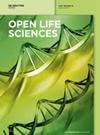影响紧急创伤后自发性体温过低的因素及预测模型的构建
IF 1.7
4区 生物学
Q3 BIOLOGY
引用次数: 0
摘要
本研究旨在调查急诊创伤患者的自发性体温过低情况,并建立一个预测模型。研究人员将 162 名急诊创伤患者分为低体温组(n = 61)和对照组(n = 101),采用改良格拉斯哥昏迷量表(GCS)评估创伤严重程度。单变量分析显示,两组在创伤严重程度、姿势、衣服湿度、保暖措施、院前液体复苏和改良 GCS 评分方面存在显著差异(P < 0.05)。与对照组相比,低体温组的凝血酶原时间更短(P < 0.05)。构建的逻辑回归模型为 Y = 25.76 - 1.030X 1 + 0.725X 2 + 0.922X 3 - 0.750X 4 - 0.57X 6,并使用 Hosmer-Lemeshow 检验对其拟合度进行评估。接收者操作特征曲线显示曲线下面积为 0.871,灵敏度为 81.2%,特异度为 79.5%。尤登指数确定的最佳预测截断值为最高值(0.58)。验证结果包括 86.21% 的灵敏度、82.93% 的特异性和 84.29% 的准确性。急诊创伤后自发性体温过低的风险因素包括创伤严重程度、就诊时的姿势、入院时衣服潮湿程度、转院时的保暖措施、院前液体复苏和改良的 GCS 评分。该风险预测模型具有很高的准确性,可有效评估急诊创伤患者自发性体温过低的风险,并有助于采取预防措施。本文章由计算机程序翻译,如有差异,请以英文原文为准。
Factors influencing spontaneous hypothermia after emergency trauma and the construction of a predictive model
This study aimed to investigate spontaneous hypothermia among emergency trauma patients and develop a predictive model. A cohort of 162 emergency trauma patients was categorized into hypothermic (n = 61) and control (n = 101) groups, with trauma severity assessed using the modified Glasgow Coma Scale (GCS). Univariate analysis revealed significant differences between the groups in trauma severity, posture, garment wetness, warming measures, pre-hospital fluid resuscitation, and modified GCS scores (P < 0.05). The hypothermic group exhibited lower prothrombin time compared to the control group (P < 0.05). A logistic regression model was constructed, expressed as Y = 25.76 − 1.030X 1 + 0.725X 2 + 0.922X 3 − 0.750X 4 − 0.57X 6 , and its fit was evaluated using the Hosmer–Lemeshow test. The receiver operating characteristic curve demonstrated an area under the curve of 0.871, with 81.2% sensitivity and 79.5% specificity. The Youden index identified the optimal predictive cut-off at its highest (0.58). Validation results included 86.21% sensitivity, 82.93% specificity, and 84.29% accuracy. Risk factors for spontaneous hypothermia after emergency trauma encompassed trauma severity, posture during consultation, clothing dampness upon admission, warming measures during transfer, pre-hospital fluid resuscitation, and modified GCS scores. The risk prediction model demonstrated high accuracy, enabling effective assessment of spontaneous hypothermia risk in emergency trauma patients and facilitating preventive measures.
求助全文
通过发布文献求助,成功后即可免费获取论文全文。
去求助
来源期刊

Open Life Sciences
BIOLOGY-
CiteScore
2.50
自引率
4.50%
发文量
131
审稿时长
43 weeks
期刊介绍:
Open Life Sciences (previously Central European Journal of Biology) is a fast growing peer-reviewed journal, devoted to scholarly research in all areas of life sciences, such as molecular biology, plant science, biotechnology, cell biology, biochemistry, biophysics, microbiology and virology, ecology, differentiation and development, genetics and many others. Open Life Sciences assures top quality of published data through critical peer review and editorial involvement throughout the whole publication process. Thanks to the Open Access model of publishing, it also offers unrestricted access to published articles for all users.
 求助内容:
求助内容: 应助结果提醒方式:
应助结果提醒方式:


